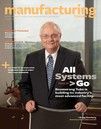Professional Level Sales
 The sales paradigm:
The sales paradigm:
It is likely that once upon a time a caveman figured out he could trade his surplus of arrowheads for food and drink; and the rest was commerce history. Sales methodologies have evolved over many decades to the practices employed today. In the past, salesmen suffocated prospective buyers with aggressive techniques. Today a more professional sales discipline is surfacing. New methods have been designed specifically to invite product exploration. As long as there has been commerce, there have been sales. One dynamic remains unaltered. A series of relational changes transpire between the seller and the buyer from point of introduction, to the sale’s close. The shift that takes place within this environment is the sales paradigm. Understanding the paradigm is a powerful tool in the science of sales.
The needs paradigm:
For the most part we tend to travel paths of least resistance. This can lead sales personnel to lean heavily on selling the benefits they are most familiar with and therefore, confident using in their pitch. The most fruitful path requires taking time to investigate and develop customer needs. Probing through an investigative journey taken with the customer requires the fusion of hard work and artisanship.
Needs based selling is the foundation of most modern sales models used to sell business-to-business services or products. There are many variations and hybrids of needs based selling. Another title often used in place of needs based selling is consultive selling. This is because the sales/customer relationship has a high degree of consulting involved. Numerous high powered books about selling including, “Integrity Selling” and “S.P.I.N,” are heavily influenced through common premises founded in needs based techniques.
In the early 1980s Xerox’s strong success with their revolutionary sales training program caught the attention of our nation. A paradigm shift from what was traditionally an emphasis on selling product benefits was evolving into new more proactive methodologies of probing and developing customer needs. Their sales training was so effective that other companies outside of Xerox’s industry began sending their sales forces to Xerox for sales training. Another revolution in the sales world was a break from the traditional closing techniques employed. The previous wisdom was to use closed ended questions, gimmicky pat closes and methods that tended to be aggressively direct. These were often referred to as hard closes. In today’s environment, few buyers want to be aggressively coerced into a purchase. This is why needs based selling methodologies are the more desired approach. The reason is quite obvious; when done correctly, the buyer closes the sale. The needs based paradigm creates a positive form of passive aggressive communique.
The perception paradigm:
It’s remarkable that by itself, it does not matter how much research the salesperson has done or how much logic their presentation or findings demonstrate. It does matter how the party they communicate with hears, comprehends and tolerates what is being said. The ideas and the rhetoric used are normally clearly understood in the presenter’s mind. All too often the presenter assumes the perception is identical in the listener’s mind. This is rarely the case, and the customer’s perception matters most of all.
Business-to-business sales personnel are often in the position of selling products and services intended to resolve problems. One of the most difficult perceptions for a salesperson to adjust to is a customer who is in denial of problems facing their business. Customers can build elaborate defenses to support irrational beliefs. Irrational beliefs are often founded proactively to insulate customers from uncomfortable realities. The magnitude customers will go to to support their false systems of beliefs can be amazingly intricate. They have to be in order make a false reality a faux reality. A highly evolved level of creative subconscious rationalization needs to be in motion in order to enable illogical beliefs which in turn enable illogical behaviors. Unfortunately, this often invokes self-destructive conduct in both the customer’s business practices and in their personal lives.
The problem facing salespersons presenting to these customers is that they will not get agreement without first breaching the denial obscuring perception. The salesperson needs to be part psychologist while being extraordinarily perceptive. The superstars of the business-to-business sales world demonstrate a high level of proficiency navigating the perception paradigm by routinely showing us that breaking through false perception is achievable.
Skilled consultive sellers close in on identifying important needs of the customer in part by establishing significant return on investment. Establishing ROI does not guarantee the salesperson can convert what might be an obvious need for a customer into a real gain for the customer. Amazingly, some customers will resist proposals knowing full well that what was presented is in the best interest of their company. Ironically, these decision makers decline proposals that are beneficial to their business because the idea was not theirs. This normally is resultant from customers who believe accepting someone else’s fix is tantamount to conceding failure and reflects poorly on them as a leader. This is the primary reason that so many business decision makers are afraid to ask for help when they truly need it. You should not expect this population of prospective customers to stand on their chairs and confess their failings to the world; they won’t. This behavior normally manifests itself into sales environments as a series of unmerited objections.
Contrarians can be coaxed into developing their needs through a conduit of questioning that proactively guides the decision-maker into finding the answers for themselves (rather than the salesperson providing them). This is a very effective way to help the customer to stop hindering their own best interests. During the questioning, the presenter should sparingly deliver thoughtfully placed parcels of information to the prospect. Contribute too much information, or over communicate benefits, and you’ll look less like a genuine needs solver and more like a hungry salesman. As explained previously, when positive passive aggressive technique is performed effectively, the decision-maker begins to close the salesperson on why they need the product. This artful paradigm shift is founded in needs based methods. The wonderful thing is that it brings tremendous benefit to everyone involved. A very important note; the salesperson must know when to stop selling and let the buyer ask their way into the deal. This is a holy unnatural act for the novice salesperson. Like most skills, it requires guts and practice. Proficiency navigating the perception paradigm is what separates the top performers from the rest. The paradigm is essentially about being perceptive to perception!
The take away paradigm:
Salespeople need to place themselves into the shoes of the buyer in order to highly evolve their styles. A prospective customer will take a defensive posture when a salesperson is trying to force them into buying something. A customer’s pose will be dramatically different when a “consultant” is sincerely helping them investigate valid needs. Now, add into this scenario the prospect is keenly aware that the product being offered is not always readily available. This raises an emotional and practical urgency especially when the buyer has already figured out they need the product/service.
The buyer’s heightened understanding of their need for the product was developed in a needs based selling environment. It is important to understand that a take-away won’t have any significant influence if you have not established a real and significant need prior. The take-away is another form of a positive passive aggressive closing technique. This establishes a buyer’s perception that a product is scarce and not always markedly accessible. When a product has an allure of exclusivity, it aspires desirability. This again is not a directly aggressive closing technique. There is an obvious pattern associated with positive passive aggressive selling; the buyer becomes the protagonist in closing the sale. Both the buyer and the seller win. Executing sales within the take- away paradigm means the only closes used by the seller are their test closes.
The benefits paradigm:
No matter how eloquently done; when a salesperson limits their pitch to defining product benefits, or reasonable product pricing, they will dramatically limit opportunity. The most likely buyers influenced by bells and whistles tend to be buyers of compulsive natures. There are many sophisticated buyers who will take a pass on these seller’s wares. Benefits are a powerful tool and should be incorporated into sales engagements but used like sugar and salt. In small amounts, they make everything taste better. Too much spice, and the meal will become inedible. An instinctual understanding of the yin and yang of needs versus benefits characterizes this paradigm.
It is not at all unusual to see technically weak sales personnel wildly outperform peers who have a substantially superior understanding of the product. Through training and “Too much techno-babble bores, intimidates and might even demean your client.” experience, salespeople become proficient with a deepening technical understanding of their company’s products and services. With increased technical prowess, it becomes correspondingly harder to resist over-touting an advanced understanding of their product’s benefits. A window salesman who tries to make a prospective buyer an expert in convective heat transfer via radiation loss calculations is not developing the customer’s need. The same holds true when selling highly technical services like those associated in disciplines such as engineering, consulting and tax law. Resist the urge to overly demonstrate a profound knowledge of your product’s intricacies and nomenclature. Resist suffocating your prospect with the benefit your services will ultimately bring them.
Remember, sugar and salt. The right amount accents customer needs properly while building ethos. Too much technobabble bores, intimidates and might even demean your customer. Don’t forget that you came all this way to sell something and the best way to do that is to develop needs, not your ego.







